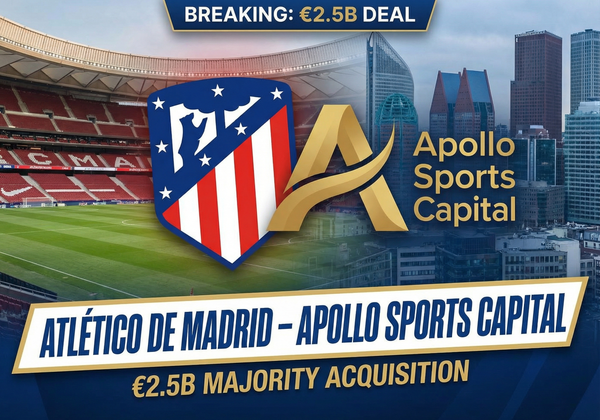The Discounted Cash Flow (DCF) Model
Imagine you could peek into the future and see exactly how much money a business will generate.
Would that help you decide whether to invest today?
That’s exactly what the Discounted Cash Flow (DCF) model does.
The DCF is one of the most widely used valuation methods in finance. It helps investors estimate the intrinsic value of a company, project, or asset by forecasting future cash flows and discounting them back to their present value.
In this post, we’ll explain what the DCF model is, how it works, and when to use it.
What is a Discounted Cash Flow (DCF) Model?
A Discounted Cash Flow (DCF) model is a financial tool used to estimate the value of an investment based on its expected future cash flows. These cash flows are then discounted back to today’s dollars using a discount rate.
The DCF model answers a simple but powerful question: What is a stream of future cash flows worth today?
Because of inflation, risk, and opportunity cost, money today is more valuable than the same amount in the future. The DCF framework adjusts for this by calculating the present value of all expected cash flows.
If the total present value (PV) of those cash flows is greater than the cost of the investment, it may be a good opportunity.
DCF and the Time Value of Money
The foundation of DCF is the time value of money (TVM). In short:
- $100 today ≠ $100 in 5 years.
- If you invest $100 today at 5% annual growth, it becomes $127.62 in 5 years.
- Conversely, $100 received in 5 years is worth less than $100 today.
The DCF model reverses this logic by asking: What are future cash flows worth right now?
Key Components of a Discounted Cash Flow Valuation
A DCF analysis rests on three main pillars:
1. Forecasted Free Cash Flows (FCF)
- Definition: The cash a business generates after covering operating expenses and capital expenditures.
- Why it matters: FCF shows the money available to investors (both debt and equity holders).
- Formula: FCF = Operating Cash Flow (OCF) - Capital Expenditures (CapEx) - Changes in Working Capital (NWC)
- OCF = EBIT × (1 - Tax Rate) + Depreciation & Amortization
2. Discount Rate (Weighted Average Cost of Capital - WACC)
- Definition: The rate used to discount future cash flows.
- Why it matters: It reflects risk and cost of capital. A higher WACC means a lower present value (riskier investments are worth less).
3. Terminal Value (TV)
- Definition: The value of all cash flows beyond the forecast period (usually 5–10 years).
- Why it matters: Most of a company’s valuation often comes from its long-term, steady-state cash flows.
Discounted Cash Flow Example (Step-by-Step)
Let’s say a lemonade stand is expected to generate the following free cash flows:
- Year 1: $1,000
- Year 2: $1,200
- Year 3: $1,500
With a discount rate of 10%, the valuation works like this:
- Present Value (PV) of each year’s cash flow:
- Year 1: 1,000 ÷ (1 + 10%)¹ = $909
- Year 2: 1,200 ÷ (1 + 10%)² = $991
- Year 3: 1,500 ÷ (1 + 10%)³ = $1,127
- Add them up:
- Total PV = $909 + $991 + $1,127 = $3,027
If you can buy the lemonade stand for less than $3,027, it may be undervalued.
Why Use a DCF Model?
- Intrinsic Valuation: Focuses on business fundamentals, not market hype.
- Flexibility: Works for start-ups, mature companies, real estate, or even personal investments.
- Decision-Making: Helps answer questions like:Should I invest in this stock?Is this project worth funding?What’s a fair price for acquiring a business?
Limitations: Garbage In, Garbage Out
A DCF is only as good as its assumptions. Small changes in growth rates or discount rates can swing results dramatically:
- Overestimating growth = Overvalued business
- Underestimating risk = Too low a discount rate
This is why analysts often use sensitivity analysis, testing multiple scenarios to see how changes impact valuation.
When to Use or Avoid the Discounted Cash Flow Model
Best For:
- Businesses with predictable cash flows (e.g., established companies).
- Investors seeking a long-term perspective.
Avoid when:
- Cash flows are highly uncertain (e.g., early-stage start-ups).
- The company is in a volatile industry (e.g., crypto, biotech).
FAQs About the Discounted Cash Flow Model
Q: What’s the difference between DCF and NPV?
A: NPV is a specific calculation for a project’s net present value. DCF is the broader valuation method that often includes NPV as a step.
Q: How accurate is a DCF model?
A: Accuracy depends heavily on assumptions. It’s a useful tool, but results should always be stress-tested with alternative scenarios.
Q: What industries rely most on DCF?
A: Common in finance, real estate, private equity, and corporate valuation.
Conclusion
The Discounted Cash Flow model is like a financial time machine: it translates future cash flows into today’s dollars, helping investors make smarter decisions.
While the DCF requires careful assumptions and isn’t foolproof, it remains one of the most powerful tools for valuing businesses, projects, and investments.
Next: A Step-by-Step Walkthrough: https://www.myfinanceprocess.com/building-a-discounted-cash-flow-model/


